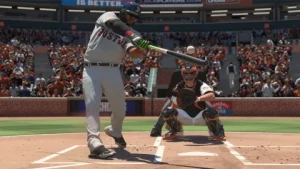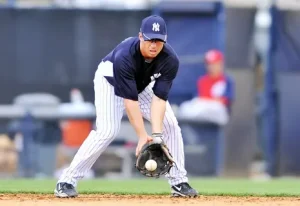Baseball is more than just about hitting the ball or making a perfect pitch. A huge part of the game involves staying calm, focused, and confident in stressful moments. Mental toughness is what helps MLB players succeed in high-pressure situations. Whether it’s the final inning of a close game or a full count at-bat, how a player thinks and reacts can make all the difference. Let’s dive into some mental toughness drills and tips that help MLB players perform under pressure.
What is Mental Toughness?
Mental toughness in baseball means staying calm and focused when things get tough. It’s about handling stress, not giving up, and performing your best even when the pressure is on. Players with strong mental toughness don’t let mistakes or tough situations shake their confidence. Instead, they use their mental strength to stay sharp and bounce back quickly.
Why is Mental Toughness Important in Baseball?

In baseball, players face many high-pressure situations. These can include:
Tight games where every move counts.
Clutch moments like a walk-off hit or save.
Nervous moments like striking out with two outs in the bottom of the 9th inning.
These situations test not only a player’s physical skills but also their mental strength. That’s why mental toughness is just as important as physical training.
Key Mental Toughness Drills MLB Players Use
MLB players don’t just train their bodies; they also train their minds. Here are some common drills that help players stay mentally strong during high-pressure moments:
1. Visualization Techniques
Visualization is when players picture themselves succeeding in their minds. Before a big game, a player might imagine hitting a home run or making a perfect pitch. This helps build confidence and prepare mentally for success.
How It Works:

A player closes their eyes and visualizes the perfect outcome of a play.
They see themselves performing with confidence and calmness.
Why It Helps:
Visualization tricks the brain into thinking it’s already experienced success, boosting self-belief.
2. Breathing and Relaxation Exercises
Breathing exercises help players stay calm in stressful moments. Simple breathing techniques, like deep breathing or box breathing, help lower stress and clear the mind.
How It Works:
Take a slow, deep breath in for four counts, hold for four, and exhale for four.
Repeat several times to reset focus and calm nerves.
Why It Helps:
Breathing helps reduce anxiety, making it easier to stay composed.
3. Focus and Concentration Drills
These drills help players improve their ability to stay focused during the game. One example is using concentration grids, where players focus on one specific point or task.
How It Works:
- Players focus on one task or skill for an extended period.
- Examples: Tracking a ball from a pitcher’s hand to the plate or focusing on one area of the field.
Why It Helps:
It builds the ability to concentrate and ignore distractions, especially during key moments.
4. Pressure Simulation Drills
To get used to high-pressure situations, players often simulate game-like stress in practice. For example, a batter may practice with two strikes, or a pitcher may work on throwing under pressure.
How It Works:
- Players practice in situations that mirror real-game pressure (e.g., bottom of the 9th inning).
- They aim to perform under pressure without getting overwhelmed.
Why It Helps:
Simulating pressure conditions helps players get used to stress, so they aren’t surprised by it during the actual game.
5. Mindfulness and Meditation
Mindfulness helps players stay present and focused. It teaches them to clear their minds of distractions and focus on the current moment. Some MLB players use meditation to stay calm and in the zone.
How It Works:
- Players take a few minutes before practice or games to meditate and focus on their breathing.
- They let go of any anxious thoughts or outside distractions.
Why It Helps:
Mindfulness helps players stay calm and present during stressful moments in the game.
6. Resilience and Mental Reframing

Every player faces failure at some point, whether it’s a strikeout, a bad pitch, or an error. Resilience is about bouncing back quickly. Reframing is about looking at failure as an opportunity to learn and improve.
How It Works:
- After making a mistake, players focus on what they can learn from the situation.
- They adjust their mindset and approach next time.
Why It Helps:
Players who are resilient are able to shake off failures and keep moving forward with confidence.
How Coaches Help Build Mental Toughness
Coaches play a big role in helping players build mental toughness. Many MLB teams have mental performance coaches who work specifically on building mental strength. These coaches teach players how to handle stress and perform under pressure. Coaches also create team-wide programs to help everyone improve their mental game.
Mental Toughness Tips for Young Players
Conclusion
Mental toughness is a vital skill for every baseball player. By practicing visualization, breathing exercises, focus drills, and resilience techniques, MLB players can stay calm and confident in the most high-pressure situations. Whether you’re a pro or just starting out, practicing these drills will help you handle pressure with ease and perform your best when it counts the most.
Now, take a deep breath, visualize your success, and get ready to face any challenge that comes your way![/vc_column_text][/vc_column_inner]



